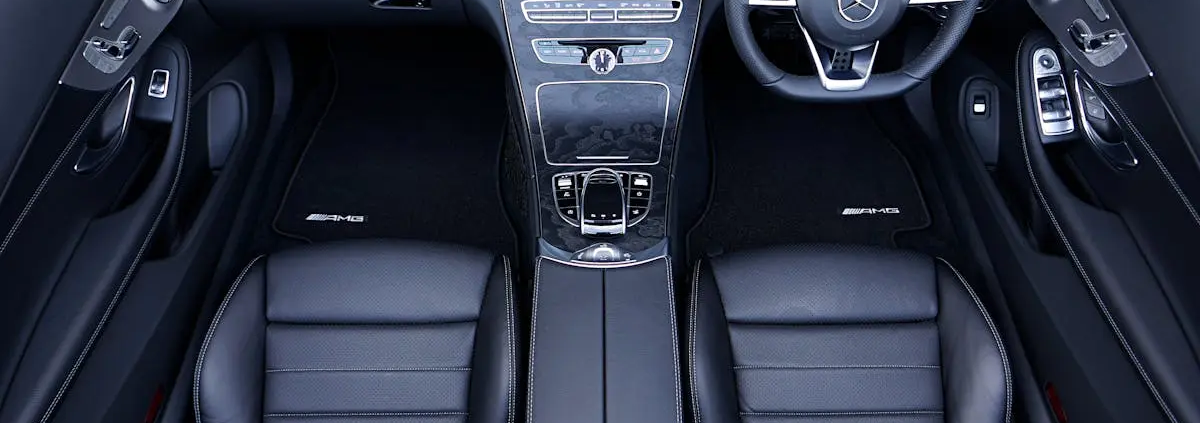Mercedes Benz Restoration: Bringing Your Vehicle Back to Perfection
Restoring a Mercedes Benz is not just about fixing a car; it’s about reviving a legacy, preserving a piece of automotive history, and enhancing your driving experience. Whether it’s a classic model or a more recent addition to the family, the restoration process requires careful planning, expert knowledge, and a love for these exceptional vehicles. In this blog post, we’ll dive into the ins and outs of Mercedes Benz restoration, exploring what it takes to bring your vehicle back to its original glory.
Understanding the Importance of Mercedes Benz Restoration
Restoration is essential to maintain the value and heritage of Mercedes Benz vehicles. This section will discuss why restoration matters, the historical significance of these cars, and how a well-executed restoration can preserve their legacy for future generations.
Every Mercedes Benz tells a story. Each scratch and every dent carries the weight of its journey, contributing to its unique character. As we delve into the importance of restoration, it’s vital to recognize that reviving these classic models is not only about aesthetics. It’s about honoring their historical context. Many of these vehicles are limited editions or represent a significant era in automotive innovation, and restoring them helps maintain the dialogue between the past and the present.
Moreover, restoration can significantly enhance the car’s market value. A meticulously restored Mercedes can fetch a premium price and attract collectors who appreciate the beauty of craftsmanship. This investment not only revitalizes your vehicle but can also yield returns should you decide to sell in the future. From enhancing the driving experience to preserving history, the reasons to embark on a restoration project are plentiful and compelling.
Assessing Your Vehicle’s Condition
Before diving into a restoration project, it’s crucial to evaluate the current state of your Mercedes Benz. We’ll cover the steps to assess bodywork, engine performance, and interior condition, giving you a clear picture of what needs attention.
A thorough assessment starts with a visual inspection. Walk around the vehicle and take note of any rust spots or paint imperfections; these can be indicators of deeper issues. A careful look inside reveals the condition of the upholstery and dashboard components. Check for fading, rips, or any signs of wear and tear. Pay special attention to the undercarriage – it’s often overlooked but can harbor hidden problems that may require significant repairs.
Engine diagnostics are equally important. In some cases, a simple test drive can highlight engine issues. Listen for unusual sounds, feel for vibrations, and check the responsiveness of the brakes. If you’re not mechanically inclined, this might be the best moment to consult a professional. Understanding your car’s current state will create a solid foundation for your restoration journey.
Creating a Restoration Plan
Planning is key to a successful restoration. This section will outline how to create a detailed plan that includes budget considerations, timelines, and key milestones to ensure your project stays on track and within budget.
An effective restoration plan begins with a realistic budget. Factor in costs for parts, labor, and potential unexpected expenses. It’s crucial to be transparent about what you can afford; this will help guide decisions throughout the restoration process. After you’ve established a budget, consider setting milestones to break down the project into manageable phases. These milestones could include completing the assessment phase, sourcing parts, or finalizing interior work.
Establishing a timeline can also keep your project on track. Determine how much time you can dedicate each week to the restoration. Setting strict deadlines may create unnecessary pressure, so allow for flexibility to account for the time it might take to source original or rare parts. A systematic approach will prevent you from feeling overwhelmed, making the journey toward your dream Mercedes Benz both structured and enjoyable.
Choosing the Right Restoration Specialists
Finding the right professionals to help with your restoration is vital. We will discuss how to select specialists who have experience with Mercedes Benz vehicles, along with tips on what to look for when choosing a restoration shop.
When selecting a restoration specialist, experience with Mercedes Benz is non-negotiable. Look for shops that specialize in luxury car restorations, particularly those with a history of working on models similar to yours. Online reviews and referrals can provide insights into a shop’s reputation; finding someone with a consistent track record will add security to your decision-making process.
Don’t hesitate to ask about previous projects and request to see examples of their work. A good specialist will showcase their past restorations with pride. It’s also advisable to have open communication about your goals for the project. A collaborative relationship with your restoration specialist can ensure that your vision is executed properly and that expectations are realistically aligned throughout the process.
Parts and Materials: Sourcing for Quality
Using quality parts is crucial to maintaining the integrity of your vehicle. Here, we’ll explore options for sourcing original and aftermarket parts, and what to consider when selecting materials for your restoration project.
Sourcing parts can be a bit of a treasure hunt. Original parts may be more expensive and difficult to find, but they often add value to the restoration by ensuring authenticity. Explore online marketplaces, salvage yards, and enthusiast networks – many times, fellow Mercedes owners have access to hard-to-find components. On the other hand, aftermarket parts might be more accessible and less expensive; however, it’s essential to ensure their quality to avoid compromising the overall restoration process.
It’s also wise to consider the materials you choose for components like upholstery and trim. Investing in high-quality, durable materials will make a noticeable difference in the car’s aesthetic appeal and longevity. Gather samples where possible and spend time deciding on color and fabric choices; after all, these elements greatly contribute to the vehicle’s character and your personal experience while driving.
The Restoration Process: Step-by-Step
This section will take you through the restoration process step-by-step, from disassembly to final touches. We’ll break down each phase, ensuring you understand what to expect and how to navigate potential challenges.
The restoration process begins with disassembly. Carefully remove components starting from the exterior, such as decals and trim, to the interior elements like the seats and steering wheel. Document each step with photographs, creating a comprehensive guide to refer back to during reassembly. As the process unfolds, underlying issues may become apparent, such as rust or mechanical failures, which will require immediate attention.
Once disassembled, bodywork and mechanical repairs often take center stage. Addressing any structural issues ensures a solid foundation for your vehicle. Painstaking attention to detail during bodywork will lead to a flawless finish that not only looks beautiful but also protects against the elements. Finally, as you reach the finishing touches, polishing the paintwork and detailing the interior will create the perfect culmination of your hard work. It’s this phase that transforms a project into a masterpiece.
Post-Restoration Care and Maintenance
Once your Mercedes Benz is restored, it’s essential to keep it in top shape. We’ll share best practices for post-restoration maintenance, including care tips and how to handle minor repairs as they arise.
Post-restoration care begins with regular maintenance checks. Make a habit of inspecting the engine and fluid levels regularly; keeping these components in optimal condition will prolong the lifespan of your vehicle. Additionally, clean and condition the exterior and interior to prevent deterioration. Use product often recommended for luxury cars to safeguard against wear and tear, especially if you plan to drive your car regularly.
Don’t forget to document any repairs or changes made to the car post-restoration. Keeping a service history not only helps you track the vehicle’s condition but also adds value should you choose to sell or trade in the future. Lastly, consider joining a local Mercedes club or online community; these groups can provide ongoing support, resources, and connections that can enhance your ownership experience. Engaging with fellow enthusiasts can keep your passion for this iconic brand alive and thriving.
Embracing the Journey of Restoration
Restoring your Mercedes Benz can be a rewarding journey that not only enhances the aesthetics and performance of your vehicle but also strengthens the bond you share with it. By following the right steps and working with skilled professionals, your beloved car can be transformed into a stunning masterpiece that you’ll cherish for years to come. Embrace the process, and let your passion for this iconic brand guide you in your restoration endeavors.





Leave a Reply
Want to join the discussion?Feel free to contribute!